How to Open a Perfume Bottle: A Complete Guide

Founder of UKPACK, Chief Packaging Designer with 18 years of experience, Red Dot Award Winner
Specialize in custom, innovative, and sustainable packaging solutions for cosmetics, skincare, personal care, hair care, food and beverage, and more.

Opening a perfume bottle can be both an art and a challenge. Whether you are a collector of vintage fragrances or a daily user of modern scents, understanding how to open a perfume bottle properly is essential to preserving the fragrance and ensuring a smooth experience. Perfume bottles come in various designs, each with its unique mechanism. This guide will provide you with the knowledge and techniques needed to master the art of opening perfume bottles, along with tips on tools, safety, and even recycling ideas.
Understanding Perfume Bottle Designs
Perfume bottles have evolved over the years, reflecting changes in style, technology, and consumer preferences. Knowing the design of your perfume bottle is the first step to opening it successfully.
Historical Era
Vintage perfume bottles often feature ornate designs with glass stoppers. These bottles are collectibles and can be quite delicate. Opening them usually requires a gentle twist and pull technique.
Modern perfume bottles tend to have minimalistic designs and are conveniently equipped with sprayers. These bottles are designed for easy use but can sometimes pose their challenges.
Brand Identity
Luxury brands often use unique and intricate designs to reflect their brand identity. These bottles may have special opening mechanisms requiring more care and attention.
Eco-friendly brands might use sustainable materials and simpler designs, making them easier to open and recycle.
Functionality and Sizes
Perfume bottle sizes vary widely, from small sample vials to large collector’s editions. This variety in sizes affects both functionality and opening methods:
- Travel-sized bottles (typically 30ml or less) are designed for convenience and portability. They often have screw caps or roll-on applicators.
- Standard sizes (50ml to 100ml) usually feature spray mechanisms and are the most common for everyday use.
- Large bottles (100ml and above) may require more force to operate the spray mechanism due to their weight.
- Display bottles or limited editions may prioritize aesthetics over functionality, requiring more careful handling regardless of their size.
Perfume Bottle Designs and Opening Techniques
Perfume bottles come with different types of closures, each requiring a specific technique to open. Here are the most common designs and how to open them:
Glass Stopper
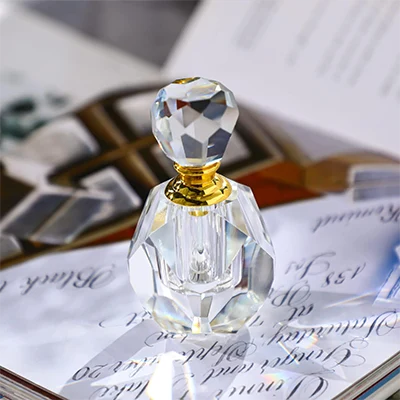
Traditional bottles with glass stoppers are elegant but can be tricky to open. Hold the bottle firmly and gently twist and pull the stopper at the same time. Applying a warm cloth around the neck of the bottle can help loosen the stopper if it is stuck.
Spray Nozzle
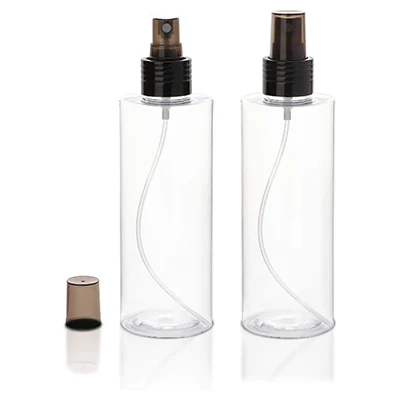
Contemporary fragrance containers typically feature a spray mechanism for easy application. To use, simply press down on the nozzle to release the fragrance. If the nozzle is stuck, try gently cleaning it with a warm, damp cloth.
Screw Cap
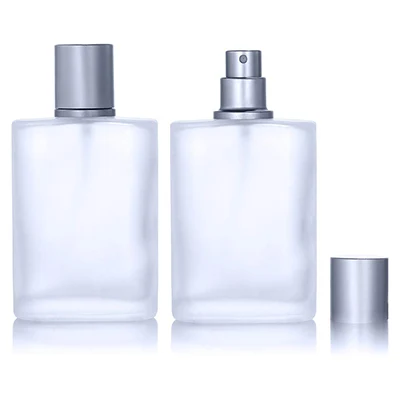
Screw caps are straightforward to open. Turn the cap counter-clockwise to unscrew it. When encountering a stubborn lid, employing a rubber grip can provide additional traction for opening.
Roll-On
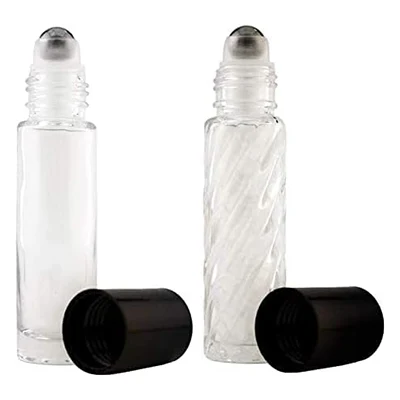
Roll-on bottles are not usually designed to be opened. If you need to open one, use pliers to gently pull off the roller ball. Be cautious as this can be tricky and may damage the bottle.
Dabber
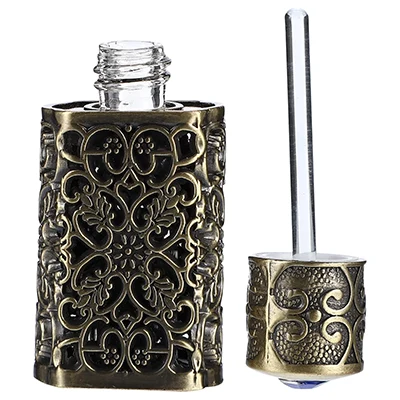
Dabber bottles have a simple pull-off cap. When faced with a stubborn cap, apply a gentle twisting motion while simultaneously pulling upwards. A warm cloth can also help to loosen the cap.
Crimped Spray Nozzle
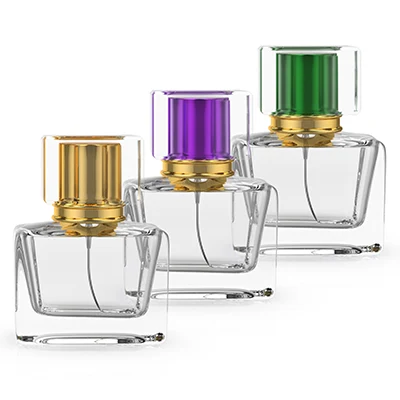
Crimped spray nozzles are securely attached to the bottle. For removing the metal crimp around the bottle neck, carefully employ needle-nose pliers or a small wire cutter. Be gentle to avoid breaking the bottle.
Essential Tools for Opening Perfume Bottles
Having the right tools can make opening perfume bottles much easier and safer. The following tools may prove helpful in your perfume bottle-opening endeavors:
- Pliers: A pair of pliers can be invaluable for tackling resistant caps and manipulating difficult nozzle assemblies. Choose pliers with a smooth grip to avoid scratching the bottle.
- Scissors: For removing plastic layers or seals around the bottle.
- Rubber Grips: Help to prevent slipping while opening caps.
- Small Funnel: Ideal for transferring perfume without spills during refilling.
- Warm Cloth: Can be used to loosen metal or plastic parts by applying gentle heat.
- Safety Gloves: Protect your hands from cuts or scrapes while handling bottles.
- Tweezers: Useful for handling small parts or removing debris from the nozzle.
Conquering Different Perfume Bottle Seals
Different seals require different techniques for opening. Here are some tips for mastering various seals:
Mastering Metal-Sealed Bottles
Metal seals can be challenging. Use a warm cloth to expand the metal slightly, making it easier to remove. Pliers can provide the leverage needed, but be careful not to apply too much force.
Tackling Plastic-Sealed Perfume Bottles
Plastic seals are more common in modern bottles. A warm cloth can help loosen the plastic. If necessary, use scissors to make a small incision, then gently twist and pull the cap off.
Safe Opening Methods for Vintage Perfume Bottles
Vintage bottles require a delicate touch. Apply warmth to the neck of the bottle to expand the glass slightly. Twist and pull gently to remove the stopper. If the stopper is very tight, let the bottle sit in a warm place for a few minutes before trying again.
Detailed Step-by-Step Guides for Each Opening Method
Each type of perfume bottle closure has a specific method for opening. Below are detailed step-by-step guides for each:
Glass Stopper
- Hold the bottle firmly in one hand.
- Use the other hand to gently twist and pull the stopper.
- If the stopper is stuck, wrap a warm cloth around the neck of the bottle for a few minutes.
- Try twisting and pulling the stopper again.
Spray Nozzle
- To dispense the scent, simply apply downward pressure on the atomizer top.
- If the nozzle is stuck, use a warm, damp cloth to clean it.
- Should you encounter any obstructions, a set of tweezers can be used to delicately extract foreign particles.
Screw Cap
- Hold the bottle firmly.
- Turn the cap counter-clockwise to unscrew it.
- If the cap is tight, use a rubber grip for better hold.
Roll-On
- Use pliers to gently pull off the roller ball.
- Be cautious to avoid damaging the bottle.
Dabber
- Hold the bottle firmly.
- Twist and pull the cap gently.
- Applying a warm, damp cloth to the cap area can help loosen it by causing slight expansion of the materials.
Crimped Spray Nozzle
- To remove the metal collar around the bottle neck, gently use needle-nose pliers or a similar tool.
- Apply gentle pressure to avoid breaking the bottle.
Prioritizing Caution: Mastering the Technique of Unsealing Fragrance Containers
Safety is paramount when handling perfume bottles. Here are some key safety tips:
- Ensure a stable workspace to prevent the bottle from tipping over.
- Clean tools before use to avoid contaminating the perfume.
- Wear safety gloves to protect your hands from cuts and scrapes.
- Handle the bottle slowly and carefully to avoid spills and breakage.
- Have a plan for handling broken glass in case of an accident.
Replenishing Your Scent Vessel: Sustaining the Olfactory Enchantment
Refilling a perfume bottle allows you to enjoy your favorite scent for longer and reduces waste. Here’s how to do it:
- Clean the bottle thoroughly before refilling. Cleanse with lukewarm water and gentle soap, thoroughly rinse, and allow to air dry completely.
- Utilize a small funnel for precise pouring of the fresh fragrance, minimizing spillage.
- After refilling, ensure the atomizer or cap is securely fastened to maintain the scent’s integrity.
Reimagining Perfume Flasks: Innovative Uses Post-Fragrance
Perfume bottles can be recycled or upcycled into beautiful and functional items. Here are some ideas:
- Creative Reuse: Use empty perfume bottles as decorative vases for small flowers or as stylish reed diffusers.
- Benefits of Recycling: Recycling glass bottles helps reduce waste and conserve resources. Numerous waste management facilities accept glass perfume containers for recycling purposes.
- Creative Repurposing: Transform emptied bottles into aromatic diffusers by incorporating diffuser reeds and aromatic oils. Create unique decorative pieces by painting or adding embellishments to the bottles.
Expert Tips: Insights from Perfume Bottle Manufacturers
Manufacturers like UKPACK have valuable insights into perfume bottle design and functionality. Here are some expert tips:
- Know the Type of Bottle: Understanding the specific design of your bottle will help you open it correctly.
- Use the Right Tools: Having the appropriate tools makes the process easier and safer.
- Slow and Steady Approach: Patience is key. Exercise patience to prevent any potential damage to the fragrance container.
- Store Properly: Keep perfume bottles upright and away from direct sunlight to preserve the fragrance.
- Seek Help if Needed: If you’re unsure how to open a bottle, don’t hesitate to consult an expert or watch instructional videos.
UKPACK’s Exquisite Perfume Bottle Designs
UKPACK is renowned for its expertise in perfume bottle design and production. Here’s an overview:
- Experience and Capabilities: UKPACK has years of experience in creating high-quality perfume bottles with innovative designs.
- Production Capacity: They have a robust production capacity, ensuring consistent quality and timely delivery.
- Quality Standards: UKPACK adheres to stringent quality standards to ensure each bottle meets customer expectations.
- Product Range: Explore UKPACK’s extensive range of perfume bottles, from vintage-inspired designs to modern, eco-friendly options.
Conclusion
While initially intimidating, accessing a perfume bottle becomes an effortless and gratifying process with proper guidance and equipment. By following the techniques and tips provided in this guide, you can master the art of opening perfume bottles and ensure a pleasant experience every time. Remember to explore upcycling and recycling ideas to give your empty bottles a new life. Happy perfuming!
FAQs: Common Reader Questions
To address common concerns, here are answers to frequently asked questions:
Q1. How to Handle a Stuck Spray Nozzle?
Use a warm, damp cloth to clean the nozzle. If it remains stuck, try soaking it in warm water for a few minutes.
Q2. What to Do if the Bottle Won’t Open?
Apply gentle heat with a warm cloth and try again. If the cap is very tight, use rubber grips for better leverage.
Q3. How to Clean a Perfume Bottle Effectively?
Rinse the bottle with warm water and a mild detergent, then let it air dry completely.
